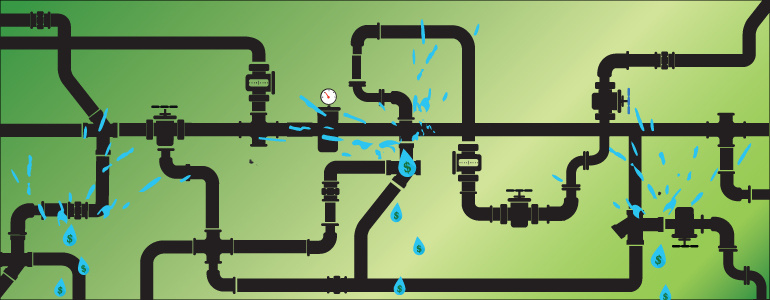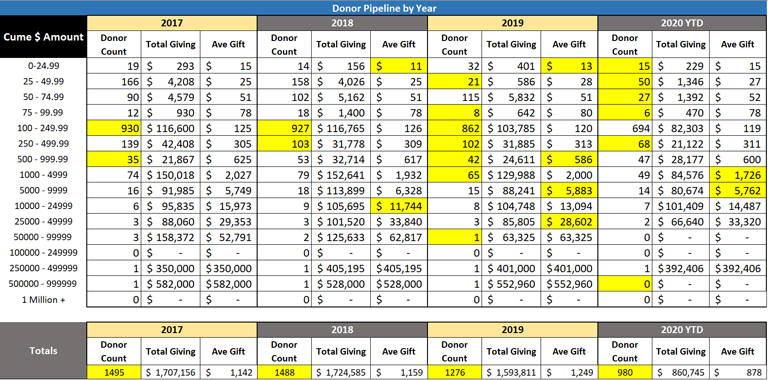Freshen Your Core Caseload to Counter Donor Attrition
#3 in the series How a Caseload Grows Over Time We have just completed a major study on how a major donor caseload behaves over time. I will address...

In my previous post, I talked about the need to diversify revenue and to get familiar with the elements of the donor pipeline. I outlined three areas I’m going to talk about in the next three posts:
Most non-profits have a hole in their donor pipeline. And if you’re a MLO, MGO or PGO and are frustrated with the quality/quantity of donors you’re getting for your program, then you need to read this and understand it, and you should pass this along to your manager. If you’re the manager, it would be really good for you to go through this exercise.
The reason you should care about this and take action is because you won’t succeed as you should in YOUR job if the donors coming your way, from the other functions in your development operation, aren’t at the quality and quantity levels you need them to be.
And the thing is, it’s relatively easy to figure out where those weaknesses are so you can repair them. You really don’t need to do some sophisticated analysis with future value projections, etc. to get some basic answers. That kind of analysis is helpful, but not necessary for these purposes. Here’s all you need to do to analyze your file to identify donor pipeline weaknesses:
Here’s an example of what your analysis will look like. I’ve eliminated one year (2016) so that this chart would fit here.
Once you have your analysis done, you’re ready to look at how donors are coming into your organization, what their value is, and how they’re migrating through the pipeline (the giving ranges).
Here’s where you’ll notice areas of opportunity, where the pipeline is “clogged” with a lot of donors – and areas of scarcity, where attention is needed to grow that area of the pipeline.
Here are some things I noticed (in yellow highlighting) in the pipeline example above:
And if you look at all the yellow highlighting, you can see either a decline in number of donors or average gift, or a lack of migration up to the higher giving levels.
I haven’t tried to be comprehensive in my analysis here, so you may see some other things that I haven’t pointed out. All I’m trying to do is introduce you to this concept and process. So here’s the point. You need to do this analysis to uncover your pipeline weaknesses. Once you do that, you need to take steps to shore up those weaknesses so that you have a healthy pipeline, a subject I’ll address in my third post, on writing a plan to diversify revenue.
And if you’re a MLO, MGO or PGO, Jeff and I suggest you pass on this information to your manager so that he or she can go through this exercise.
A healthy mid, major or planned giving program doesn’t just happen all by itself. Nor does it happen by prospecting for donors outside of your organization’s donor file. It happens when all the functions of donor acquisition and cultivation are fully functioning and effective. (Tweet it!)
Take some time to do this work or see that it gets done. Together with the work I’ll be suggesting next week, it will result in happier and more fulfilled donors who stay with you and give more. And it will result in your being more successful in your job. Who doesn’t want that?
Richard

#3 in the series How a Caseload Grows Over Time We have just completed a major study on how a major donor caseload behaves over time. I will address...

Most non-profits don’t realize there’s a connection between their organization’s structure and their donor pipeline.

Second in a Six-Part Series: What Should I Do If…?